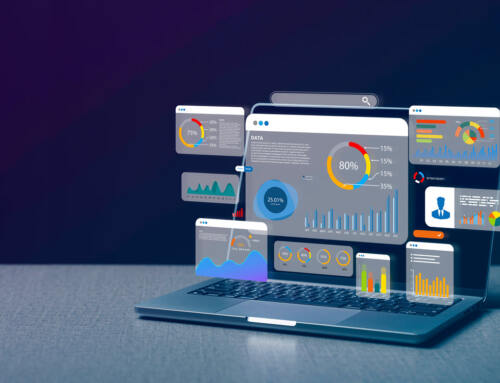Image SEO Roadmap. . .
Image Optimization SEO – The Basics
So what is image seo? Simply put it’s optimizing your images which improves page loading speed and overall user experience, which positively impact your SEO. This leads to higher rankings and more traffic to your website.
SEO Image Size: Why It Matters
Sizing your images to improve your seo and user experience is the art of stricking the perfect balance of image quality over image size. While you intent to have your images looking perfect on every screen, they also have to be in the correct format and smallest file size possible to achieve a good page loading speed. The goal is under 1.3 seconds. You won’t achive this by taking pictures from your phone and uploading them to your website without any editing. Imagine a large highway billboard. This is what you are uploading to your website when most of the time your only filling up a space that’s the average size of a postal stamp. This is where compression and file format come into play. If your adding images ten times the size your serving them on your page, it will take that much longer to load the page. It’s that important to get right and it’s only part of the story! There’s tricks like lazy loading images but thats out of this scope and we will dive deeper into advanced images seo techniques later in this article.
SEO-Friendly Image File Names
Creating Seo friendly filenames is the art of crafting descriptive file names to boost your website’s SEO. It also helps screen readers and search engine crawlers understand your images better. For example, defaultimage007.jpeg is a horrible file name. This would make it hard for anyone to find an image on there local machine, right?. So how would a “robot” or search engine crawler know what defaultimage007.jpeg is? If it was an image of the newest air jordan basketball shoes wouldnt it make sense to name the file new_air_jordan_shoes.jpeg? May seem obvious now, but it’s often overlooked. Even when uploading a video thumbnail it’s good practice to save the file with an accurate and descriptive file name before uploading. The goal is not to stuff your keyword in their, but if your following the best practices then creating seo-friendly image file names, this should happen almost automatically. Just double check your images are not on an auto generated default name.
Image File Types: JPG, PNG, and More
Understanding the pros and cons of different image formats for SEO. I won’t be taking about GIF’s or those animated images that used to go viral on social media. They are an option but I will spend time on the mostly used file formats for theses examples. The .jpeg image file extentsion is likely what you’ll be using for images on your website. When the image is something like a logo then PNG or .png would be used as you’ll most likely want a transparent background. Because the logo is placed on the navigation bar of the website which already has a background, it may not look quite right in most cases. This is because in JPEG format you’ll generally end up with a white background. The file size will most likely be a bit bigger but it is the mostly used option here. Then there is SVG or .svg which stands for scalable vector graphics. These are mathmatical shapes that scale well. They are harder to create and usually made by a graphic designer. Some are even animated. If you have the resources or know graphic design, you’d probably choose the SVG format for your logo as well. Then there is the new kid on the block called WebP. It’s created by Google and you can read more about the WebP file format here. I’m betting since its even faster and it’s a Google product it will become widely adopted soon and favored as a file format to increase page speed and optimize your images even more. The take away is you will probably be using a .jpg or .jpeg which are the same format for now. These images can also be resized and compressed for an extra increase in file size reduction. You can optimize your JPEG, PNG, SVG, GIF and WebP images using a tool like Compressor. It’s free but has a nice pro version that offers advanced compression settings, image resizing, automatic file renaming and more! How cool is that?
Best Image Format for SEO
Now that we ‘ve gone over the different file formats for images and when they are used, I bet your wondering what’s the best image format for SEO, am I right? It’s going to be the file format the you can compress down to the smallest size while maintaining the best quality. This will give your users the best looking photos and experience while keeping your page load time as fast as possible. It may differ for a specific cases, but im guessing a correctly sized and compressed JPEG will do the trick for now as we gradually move into the world of WebP.
Image Metadata for SEO
So how does image metadata enhance your image search engine visibility? First, we need to find out what image metadata is. Image metadata is information about the image usually created in the production of the image. It may have an image name, an author, time the image was take or where. Even by what device or location and it’s widely used for copyright protection. Thats great and all but how will image meta data help my SEO? The answer is by finding a balance of strategically describing your images and using only the data you need. For example, if you were doing local SEO then the location the picture was taken could help. The fact the image was originally taken on a certain date by a specific device probably won’t be needed unless maybe you were selling that device. It comes down to scope of your project and goals. The goal would be only to keep the esssential metadata on your image and discard or not use what’s not essential. There is also the factor of a bunch of useless metadata on your image you may not now about making the filesize larger then it has to be. This will in turn slow your page down. Don’t use this as an opportunity to stuff keywords but as a way to accurately describe the image and use only the necessities. For image SEO purposes it will likely be a well written image description that will be helpful here.
Best Practices For Image SEO
Here are some best practices for optimizing your page images for search enegines
Naming Images for SEO
We touched on this a bit earlier but here are some tips on creating relevant and keyword-rich image names.
Image SEO Tips and Tricks
By implementing these image SEO tips and tricks, you can enhance the visibility of your pages and images in search results, engage your audience more effectively, and ultimately improve your website’s overall performance and rankings. Remember that image optimization is not only about SEO but also about creating a better user experience. 🌟📸🚀
On-Page SEO with Images
Images can significantly enhance the visual appeal and user engagement of your web content. When integrated thoughtfully, images not only improve the user experience but also contribute to your on-page SEO efforts. Here’s a comprehensive guide on how to optimize your on-page SEO with images.
1. Relevant Visual Context:
- Align with Content: Ensure that the images you choose are directly related to the content they accompany. Images should provide visual context and support the text.
2. Image Placement:
- Above the Fold: Place important images near the top of the page (“above the fold”) to immediately capture the reader’s attention and provide context for the content.
3. Image Size and Compression:
- Optimize Load Times: Resize and compress images to keep page load times fast. Users and search engines favor websites that load quickly.
4. File Names and Alt Text:
- Descriptive File Names: Use descriptive, keyword-rich file names for your images to enhance SEO. For example, instead of “img123.jpg,” use “healthy-eating-vegetables.jpg.”
- Alt Text: Write meaningful alt text that describes the image for both search engines and accessibility purposes. Include relevant keywords naturally, while avoiding keyword stuffing.
5. Image Captions:
- Engaging Captions: If appropriate, add descriptive captions to your images. Captions can provide additional context and encourage users to read the accompanying text.
6. Image Thumbnails:
- Thumbnail Navigation: When using image thumbnails for galleries or product previews, ensure that each thumbnail is clickable and leads to a larger, high-quality image.
7. Image Alignment:
- Left or Right Alignment: Align images to the left or right of text to break up long paragraphs and create visual interest. This can improve the overall readability of your content.
8. Schema Markup:
- Structured Data: Implement schema markup for images using the ImageObject schema. This can provide search engines with more information about your images, such as licensing and authorship.
9. Avoid Image-Only Content:
- Balance with Text: Avoid presenting crucial content as images, especially text. Search engines rely on text to understand and rank your content.
10. Image Linking: – Use Wisely: If you use images as links, ensure that the linked page is relevant to the image content and that you use descriptive anchor text.
11. Mobile Optimization: – Responsive Design: Make sure your images are responsive, so they adapt well to various screen sizes, including mobile devices.
12. Test and Monitor: – Performance Tracking: Regularly monitor the performance of your pages containing images in Google Search Console. Check for any issues like missing alt text or slow-loading images.
13. Licensing and Attribution: – Respect Copyright: If using images that require attribution or have licensing restrictions, make sure to provide proper attribution and adhere to copyright laws.
14. Social Sharing: Consider optimizing images for social media sharing by using Open Graph and Twitter Card meta tags to ensure that shared images display correctly. The WordPress seo plugin Rankmath helps you do this very easily.
By implementing these on-page SEO techniques with images, you can enhance the overall quality of your content, improve user engagement, and increase the visibility of your web pages in search engine results. Remember that effective image integration is not just about aesthetics; it’s about providing a seamless and informative user experience. 📸📊



